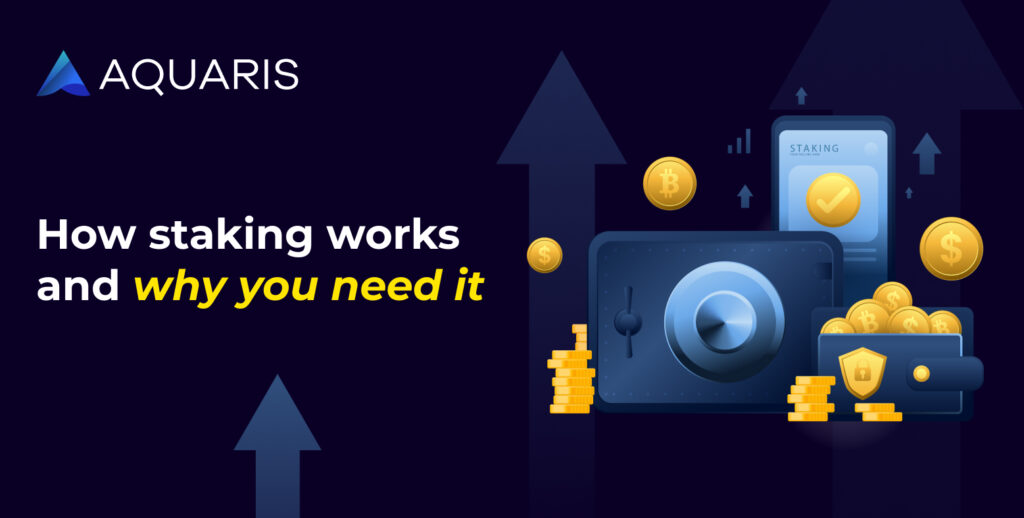
Staking is comparable to a bank deposit. You store coins in a cryptocurrency wallet to keep the blockchain running. So you block a certain amount of cryptocurrency, that is, you cannot use it for a certain time.
Staking is a greener alternative to mining. Compared to the latter, it does not require large computer power or other computing equipment. Therefore, it does not need a lot of electricity.
Staking is closely related to the Proof of Stake mechanism. When using it, the principle applies: the larger the amount you store, the more blocks you have a chance to create. For each confirmed transaction and a new block in the blockchain, you will receive a reward - a certain number of coins.
First, participants pledge their coins to the cryptocurrency protocol. From these participants, the protocol selects validators, that is, a node that has the right to confirm transactions. The more coins you stake, the more likely you are to become a validator.
If you want to stake, you need to choose a cryptocurrency that uses the Proof of Stake model. For example, Cardano, Tezos, Solana. Then you can choose the amount you want to invest. You can do this with many popular cryptocurrency exchanges like Coinbase and so on.
While staking, your coins remain with you. But you block them on your wallet, that is, you cannot use them for a certain time. You can stop staking if you want to sell your coins. When exactly you can pick them up depends on various factors. Some cryptocurrencies have a minimum staking process, such as three months. During this time, you cannot withdraw your funds.
Staking and mining are consensus mechanisms, that is, algorithms for confirming transactions in the blockchain. They ensure that transactions are legitimate. For example, no one tries to spend the same coins more than once.
But there is a difference between them. Mining works according to the Proof of Work protocol, where miners compete to solve cryptographic puzzles. The one who does it faster gets the right to check the last block of transactions in the blockchain and create a new block. For this, he receives a small reward in the cryptocurrency that he mines.
Key benefits of staking:
Risks associated with staking:
Staking is a way to validate transactions and create a block on the blockchain. It only works for cryptocurrencies that use the Proof of Stake algorithm. For example, Ethereum 2.0, Tezos, Solana and others. For this you receive a reward in the form of new coins. The more coins you have, the more chances you have to create a new block.
You can do staking on your own, but for this you need to understand the technical details of the cryptocurrency. Sometimes it is also expensive - some blockchain networks have an entry threshold. For example, to confirm Ethereum transactions, you need to have 32 coins.